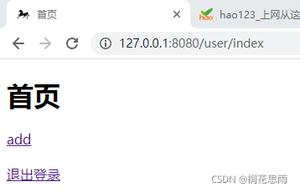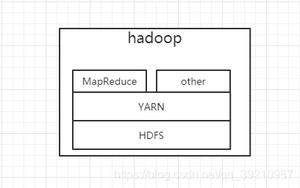Python进阶: Decorator 装饰器你太美

函数 -> 装饰器
函数的4个核心概念
1.函数可以赋与变量
def func(message):print('Got a message: {}'.format(message))
send_message = func
send_message('hello world')
#输出
#Got a message: hello world
2.函数可以当作函数的参数
def get_message(message):return 'Got a message: ' + message
def root_call(func, message):
print(func(message))
root_call(get_message, 'hello world')
输出
#Got a message: hello world
3.函数里嵌套函数
def func(message):def get_message(message):
print('Got a message: {}'.format(message))
return get_message(message)
func('hello world')
输出
#Got a message: hello world
4.函数作为函数返回值(闭包)
def func_closure():def get_message(message):
print('Got a message: {}'.format(message))
return get_message
send_message = func_closure()
send_message('hello world')
#输出
#Got a message: hello world
简单装饰器
例
def my_decorator(func):def wrapper():
print('wrapper of decorator')
func()
return wrapper
def greet():
print('hello world')
greet = my_decorator(greet)
greet()
使用语法糖 @
def my_decorator(func):def wrapper():
print('wrapper of decorator')
func()
return wrapper
@my_decorator
def greet():
print('hello world')
greet()
# 输出
# wrapper of decorator
# hello world
带有参数的装饰器
直接在 wrapper函数中加上参数
def my_decorator(func):def wrapper(message):
print('wrapper of decorator')
func(message)
return wrapper
@my_decorator #相当于 greet == wrapper(message)
def greet(message):
print(message)
greet('hello world')
# 输出
#wrapper of decorator
#hello world
这个装饰器只能用在有一个参数的函数,如果想对任意参数的函数通用,可以这么写
def my_decorator(func):def wrapper(*args, **kwargs):
print('wrapper of decorator')
func(*args, **kwargs)
return wrapper
带自定义参数的装饰器
利用装饰器自定义参数这特性,实现重复执行装饰器内部函数
def repeat(num):def my_decorator(func):
def wrapper(*args, **kwargs):
for i in range(num):
print('wrapper of decorator')
func(*args, **kwargs)
return wrapper
return my_decorator
@repeat(4)
def greet(message):
print(message)
greet('hello world')
# 输出:
# wrapper of decorator
# hello world
# wrapper of decorator
# hello world
# wrapper of decorator
# hello world
# wrapper of decorator
# hello world
原函数还是原函数?
greet.__name__#输出
'wrapper'
help(greet)
# 输出
Help on function wrapper in module __main__:
wrapper(*args, **kwargs)
可以看出,原函数的原信息会被wrapper取代
如果不想其改变,那么可用内置装饰器@functools.wraps将原函数的元信息拷贝过去。
import functoolsdef my_decorator(func):
@functools.wraps(func)
def wrapper(*args, **kwargs):
print('wrapper of decorator')
func(*args, **kwargs)
return wrapper
@my_decorator
def greet(message):
print(message)
greet.__name__
# 输出
#'greet'
类装饰器
类装饰器主要依赖于 __call__()函数,每当调用类实例时,__call__()函数会被执行一次
class Count:def __init__(self, func):
self.func = func
self.num_calls = 0
def __call__(self, *args, **kwargs):
self.num_calls += 1
print('num of calls is: {}'.format(self.num_calls))
return self.func(*args, **kwargs)
@Count
def example():
print("hello world")
example()
# 输出
# num of calls is: 1
# hello world
example()
# 输出
# num of calls is: 2
# hello world
装饰器的嵌套
@decorator1@decorator2
@decorator3
def func():
...
#相当于 decorator1(decorator2(decorator3(func)))
import functoolsdef my_decorator1(func):
@functools.wraps(func)
def wrapper(*args, **kwargs):
print('execute decorator1')
func(*args, **kwargs)
return wrapper
def my_decorator2(func):
@functools.wraps(func)
def wrapper(*args, **kwargs):
print('execute decorator2')
func(*args, **kwargs)
return wrapper
@my_decorator1
@my_decorator2
def greet(message):
print(message)
greet('hello world')
# 输出
# execute decorator1
# execute decorator2
# hello world
装饰器的实例用法
1)身份验证,不登录不允许操作
import functoolsdef authenticate(func):
@functools.wraps(func)
def wrapper(*args, **kwargs):
request = args[0]
if check_user_logged_in(request): # 如果用户处于登录状态
return func(*args, **kwargs) # 执行函数 post_comment()
else:
raise Exception('Authentication failed')
return wrapper
@authenticate
def post_comment(request, ...)
...
2)日志记录 可测试函数的执行时间
import timeimport functools
def log_execution_time(func):
def wrapper(*args, **kwargs):
start = time.perf_counter()
res = func(*args, **kwargs)
end = time.perf_counter()
print('{} took {} ms'.format(func.__name__, (end - start) * 1000))
return res
return wrapper
@log_execution_time
def calculate_similarity(items):
...
3) 合法性检测
import functoolsdef validation_check(input):
@functools.wraps(func)
def wrapper(*args, **kwargs):
... # 检查输入是否合法
@validation_check
def neural_network_training(param1, param2, ...):
...
LRU cache. @lru_cache缓存装饰器
@lru_cache
def check(param1, param2, ...) # 检查用户设备类型,版本号等等
...
4) try...excaption
class ServerDebugHelper:@classmethod
def debug(cls):
def decorator(func):
@wraps(func)
def wrapper(*args, **kwargs):
try:
return func(*args, **kwargs)
except:
import traceback
print(traceback.format_exc())
return wrapper
return decorator
参考
极客时间《Python核心技术与实战》专栏
以上是 Python进阶: Decorator 装饰器你太美 的全部内容, 来源链接: utcz.com/z/389284.html




